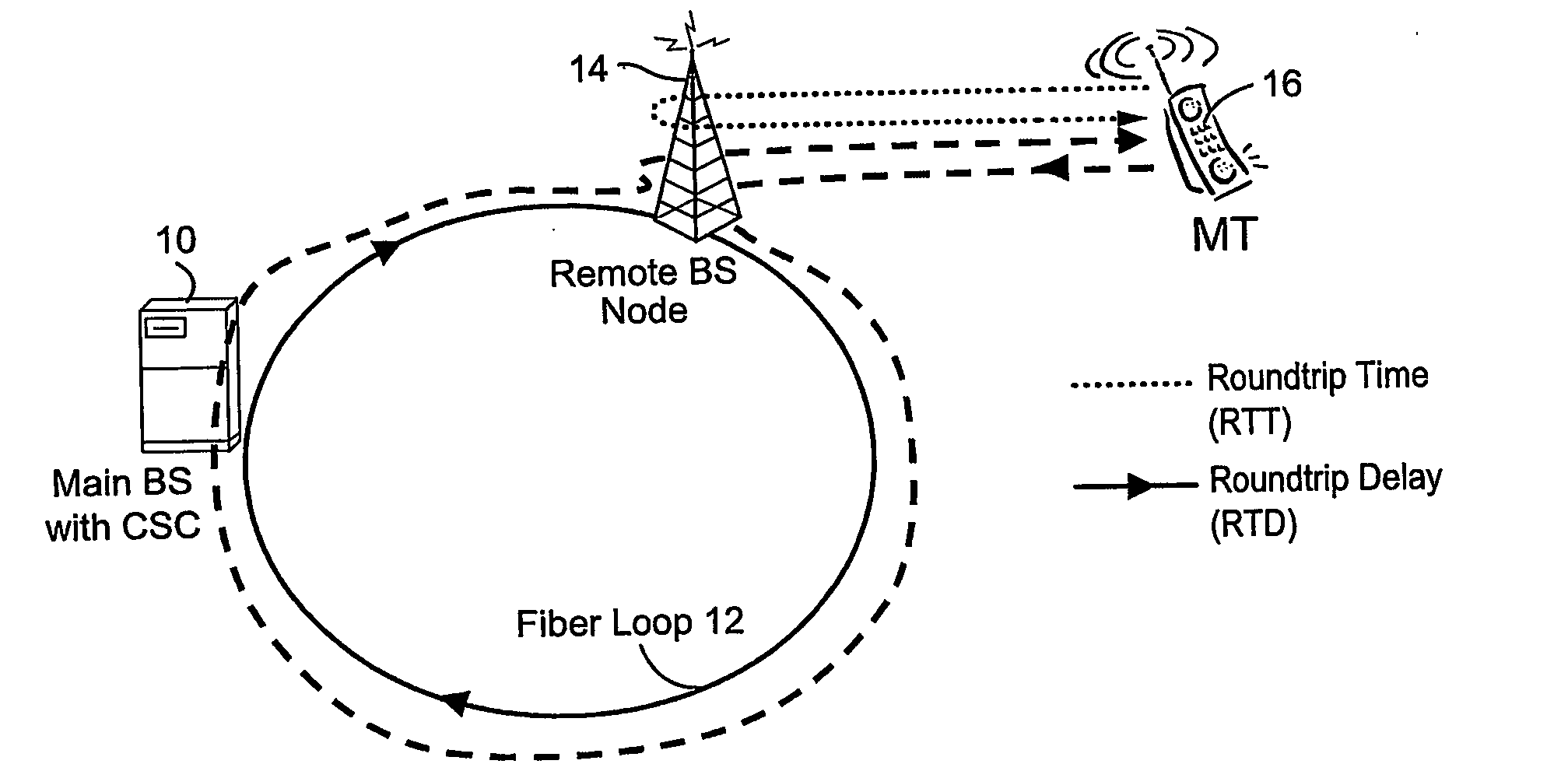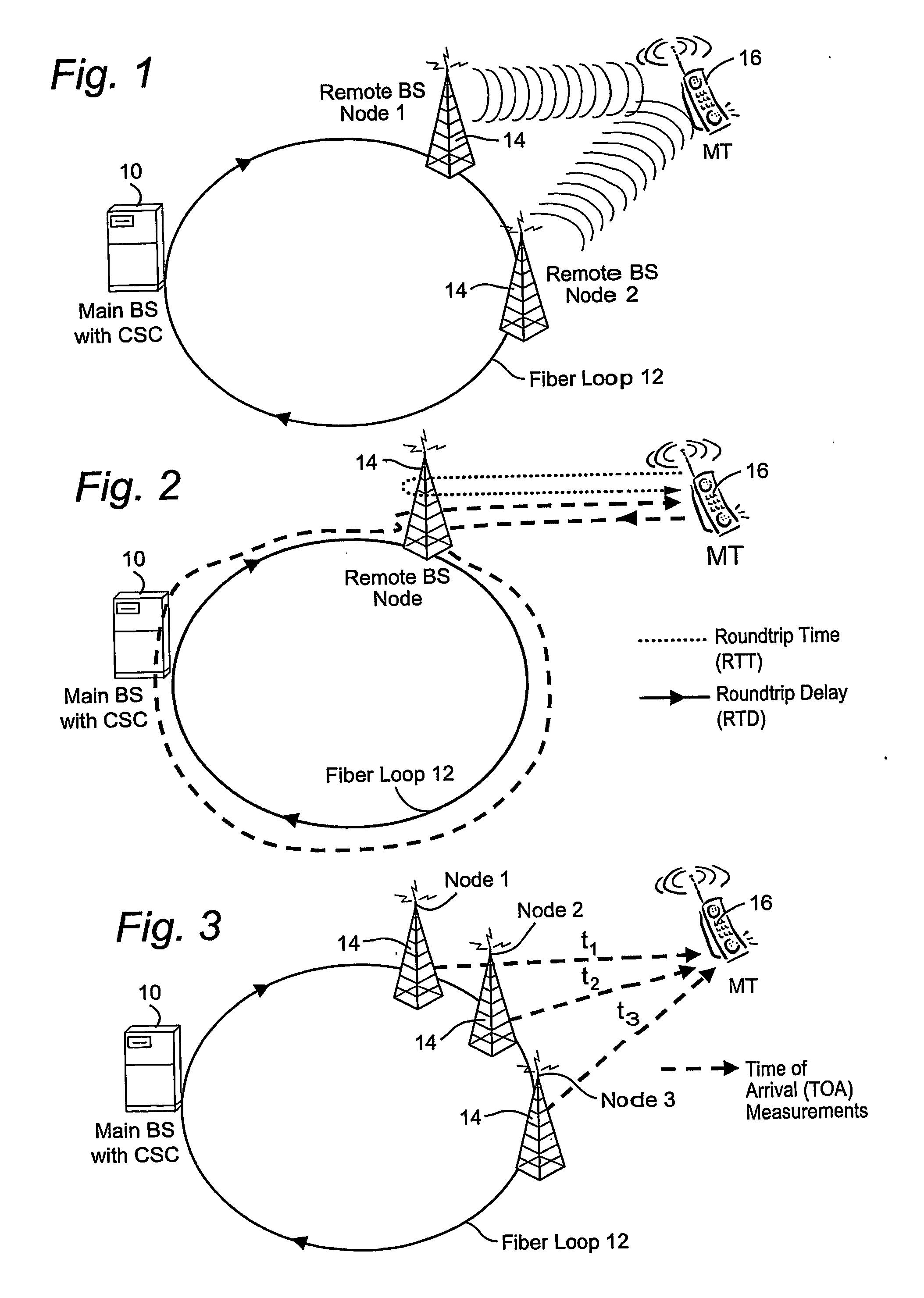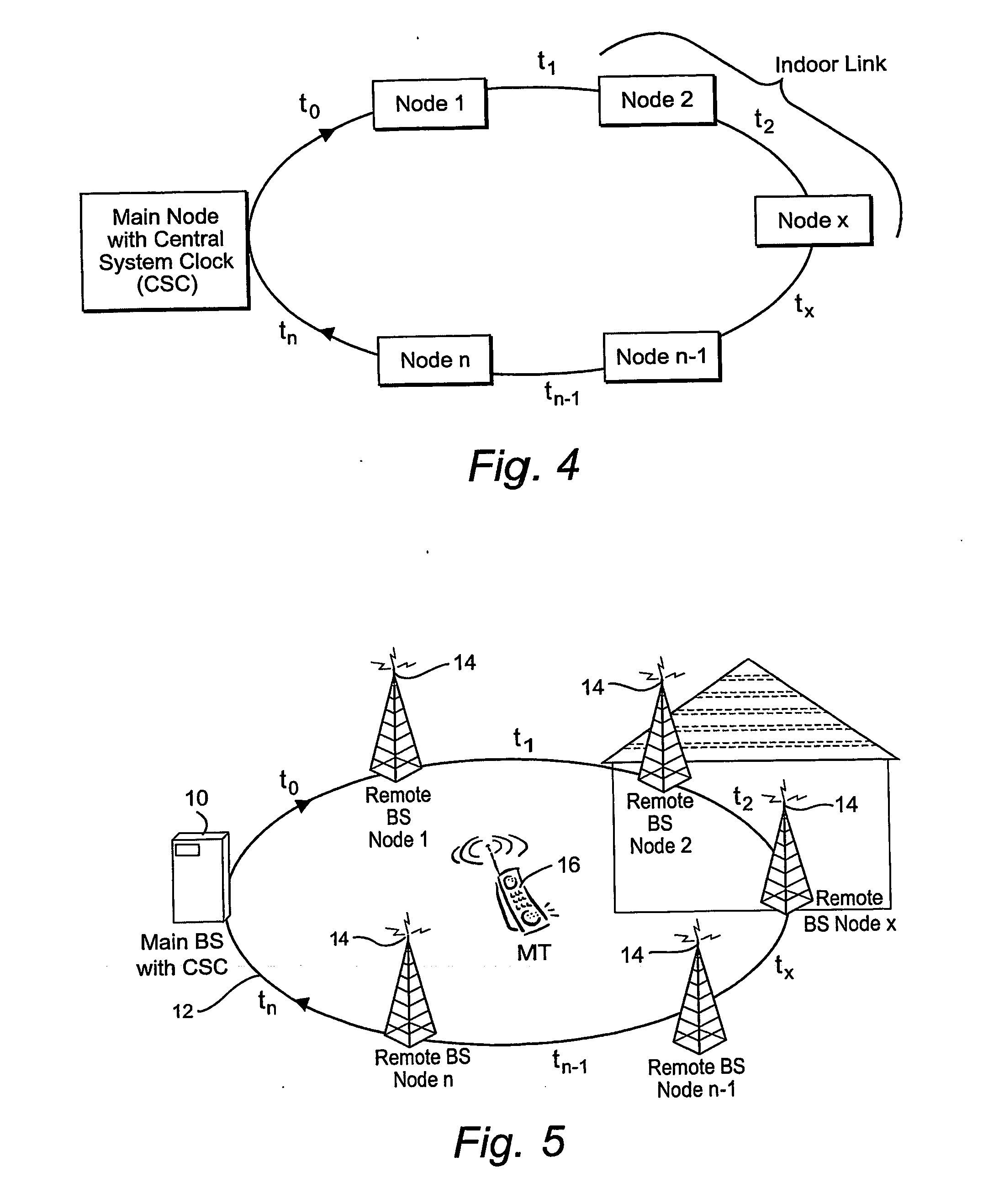Temperature compensation for transmission between nodes coupled by a unidirectional fiber ring
a transmission node and temperature compensation technology, applied in the field of temperature compensation for transmissions, can solve the problems of inability to accept a synchronization solution, the gps synchronization may be less suitable for indoor systems, and the gps receiver is expensive, etc., and achieve the effect of accurate measuremen
- Summary
- Abstract
- Description
- Claims
- Application Information
AI Technical Summary
Benefits of technology
Problems solved by technology
Method used
Image
Examples
Embodiment Construction
[0030] The following description, for purposes of explanation and not limitation, sets for the specific details, such as particular components, electronic circuitry, signaling, techniques, standards, etc. in order to provide an understanding of the described technology. But it will be apparent to one skilled in the art that other embodiments may be practiced apart from the specific details. In other instances, detailed descriptions of well-known methods, devices, techniques, etc. are omitted so as not to obscure the description with unnecessary detail. For example, one advantageous application is a radio access network that employs a main-remote base station functionality. The main base station unit may communicate with the remote base station units using, for example, the common public radio interface (CPRI) specification. But other interfaces, as well as other applications, may be employed. Individual function blocks are shown in the figures. Those skilled in the art will apprecia...
PUM
 Login to View More
Login to View More Abstract
Description
Claims
Application Information
 Login to View More
Login to View More - R&D
- Intellectual Property
- Life Sciences
- Materials
- Tech Scout
- Unparalleled Data Quality
- Higher Quality Content
- 60% Fewer Hallucinations
Browse by: Latest US Patents, China's latest patents, Technical Efficacy Thesaurus, Application Domain, Technology Topic, Popular Technical Reports.
© 2025 PatSnap. All rights reserved.Legal|Privacy policy|Modern Slavery Act Transparency Statement|Sitemap|About US| Contact US: help@patsnap.com



